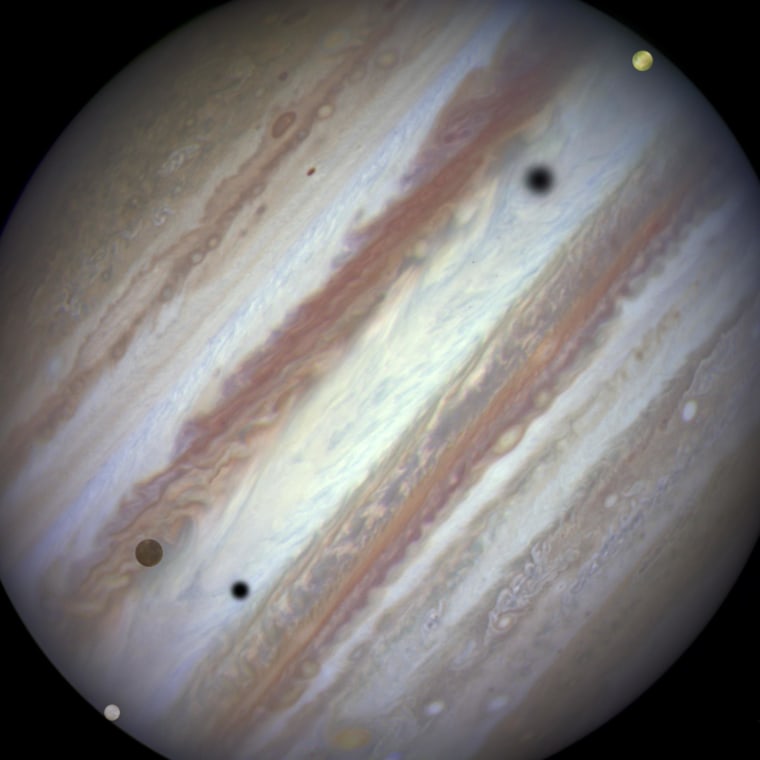Three Jovian moons and their shadows race across the face of Jupiter in an amazing sequence of images captured by the Hubble Space Telescope.
The three-moon night took place on Jan. 24: From left to right, Europa, Callisto and Io could be seen against the backdrop of Jupiter's colorful cloud tops. The moons' shadows seem to precede them across the disk, due to the sun angle. Those shadows look sharper or fuzzier depending on the distance between the moons and the planet.
Europa and Callisto are ice-covered moons that might harbor subsurface oceans, while Io is considered the most volcanic body in the solar system. They're three of the four "Galilean satellites" that were first observed by Galileo Galilei in the 17th century, and can be spotted from Earth using binoculars. (The fourth Galilean satellite, Ganymede, didn't make it into the picture this time around.)
It's rare to see three moons passing over Jupiter's disk at the same time. The phenomenon occurs only once or twice a decade, Hubble's science team says. For more about last month's three-moon night, check in with the Space Telescope Science Institute's Hubblesite and the Hubble European Space Agency Information Center.
Join members of the Hubble Heritage Team in a live Hubble Hangout event at 3 p.m. ET Thursday to learn more about Jupiter's rare triple-moon conjunction.
